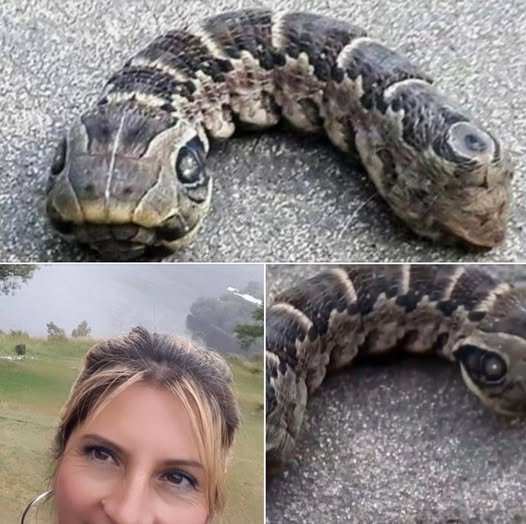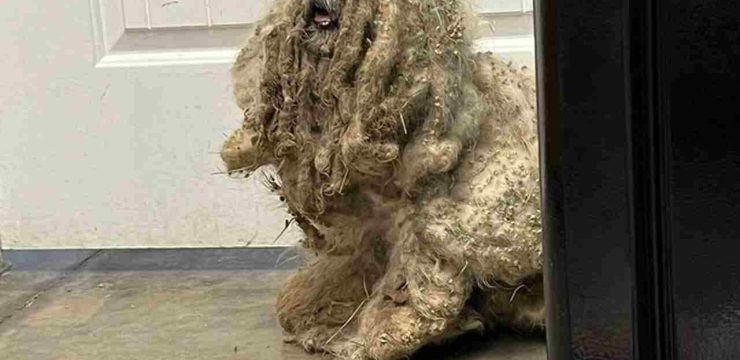In the peaceful town of Santa Fe, Argentina, 46-year-old Lujan Eroles had an unexpected and startling encounter in her backyard that quickly captivated not only her neighborhood but also people across the internet. While going about her day, Eroles suddenly came face to face with a creature so unusual that it sent a jolt of fear through her.

At first glance, she believed she was staring at a small snake. The creature, approximately 10 centimeters in length, had the unmistakable look of a serpent, complete with bulging eye-like markings and an eerie stillness. Her initial reaction was pure shock—she screamed. Startled by the noise, neighbors rushed over to see what had caused such a commotion. What they found was the same baffling creature, curled up and motionless in the garden, its body resembling a snake in both color and posture. Eroles described the moment vividly in an interview with National Geographic, saying she had never seen anything like it in her life. The creature’s strange eyes, which seemed almost too large for its body, made her uneasy. She feared it might be poisonous, unsure if it posed a danger to her or those nearby. “I looked down and saw this strange animal,” she recalled.
“I was afraid it could be venomous. We thought it might be some kind of mutant animal.” Their uncertainty and curiosity led them to record a video of the strange visitor and share it online in hopes that someone could identify it. The video quickly gained traction, sparking discussions and debates across social media platforms. People speculated wildly about what it could be. Some were convinced it was a baby snake with unusual features, while others guessed it was an entirely new species. The creature’s snake-like body, paired with its peculiar eye-like spots, had everyone guessing.
As interest grew, experts and amateur naturalists began chiming in. Eventually, the mystery was solved. The bizarre creature was not a snake at all but a caterpillar—a very rare one, in fact. It belonged to a species of moth native to Central America and was most likely an Elephant Hawk-Moth caterpillar. What made this caterpillar extraordinary was its highly developed defense mechanism.
To avoid being eaten by predators, the caterpillar had evolved to mimic the appearance of a snake. Just behind its head, it featured two large, false eye spots that looked startlingly real. This mimicry tricks would-be predators into thinking they’re facing a snake rather than a defenseless insect. It’s a brilliant and effective example of how some creatures rely on illusion for survival. Without claws, venom, or speed, this caterpillar uses visual deception as its main line of defense.
By looking like something dangerous, it avoids becoming dinner. The encounter left a lasting impression on Eroles and her neighbors, not only because of the initial fear it sparked but also because of the awe it inspired once they understood what they were seeing. It served as a reminder of the complexity and wonder of the natural world, where even the tiniest organisms have developed extraordinary ways to survive. This moment also highlighted the power of online communities, where sharing a short clip of an unknown animal can lead to global attention and answers from unexpected places.
For Eroles, what started as a frightening garden discovery turned into a lesson in biodiversity and adaptation. The caterpillar, through its remarkable mimicry, had not only protected itself from danger but also educated an entire audience about the ingenuity of evolution. Encounters like this one show how much there still is to discover and appreciate in nature, even in our own backyards. The natural world is full of surprises, and sometimes the most incredible stories begin with a simple scream in a quiet garden. What may look alarming at first glance can turn out to be one of nature’s most clever disguises—proving once again that beauty, mystery, and survival often come in the most unexpected forms.





